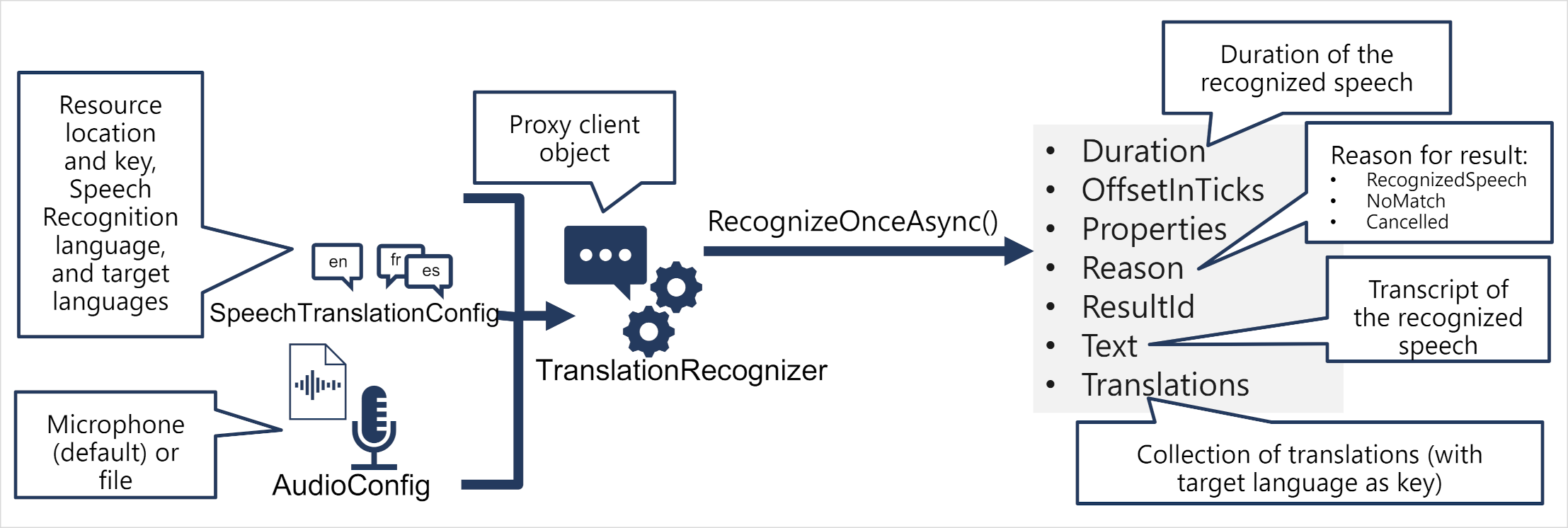Translate speech to text
The pattern for speech translation using the Azure AI Speech SDK is similar to speech recognition, with the addition of information about the source and target languages for translation:
Use a SpeechTranslationConfig object to encapsulate the information required to connect to your Azure AI Speech resource. Specifically, its location and key.
The SpeechTranslationConfig object is also used to specify the speech recognition language (the language in which the input speech is spoken) and the target languages into which it should be translated.
Optionally, use an AudioConfig to define the input source for the audio to be transcribed. By default, this is the default system microphone, but you can also specify an audio file.
Use the SpeechTranslationConfig, and AudioConfig to create a TranslationRecognizer object. This object is a proxy client for the Azure AI Speech translation API.
Use the methods of the TranslationRecognizer object to call the underlying API functions. For example, the RecognizeOnceAsync() method uses the Azure AI Speech service to asynchronously translate a single spoken utterance.
Process the response from Azure AI Speech. In the case of the RecognizeOnceAsync() method, the result is a SpeechRecognitionResult object that includes the following properties:
- Duration
- OffsetInTicks
- Properties
- Reason
- ResultId
- Text
- Translations
If the operation was successful, the Reason property has the enumerated value RecognizedSpeech, the Text property contains the transcription in the original language. You can also access a Translations property which contains a dictionary of the translations (using the two-character ISO language code, such as "en" for English, as a key).
